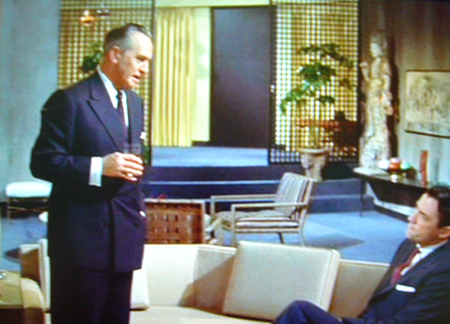Sentimental Journey
One of the things I love most about Mad Men is that we know what is coming. We knew that November 22, 1963 was a bad date for Roger’s daughter’s wedding. We know that Don’s daughter, Sally, is destined for counter-culture rebellion in 1968. Reading The Man in the Gray Flannel Suit is the same. Sloan Wilson’s 1955 novel follows Tom Rath as he tries to find direction in a materialistic post-war America. Clearly, much of Mad Men was derived from this. The Man in the Gray Flannel Suit is remarkable because it stepped out of the conformity of the 1950s and asked how an individual could function post-World War II. How does someone go from killing an enemy with a knife and then sitting politely in the suburbs or in a corporate setting?
The book was made into a film with Gregory Peck and Jennifer Jones in 1956. At a time when other films of the time, like It’s Always Fair Weather, are contrived and feel like a cartoon reality, The Man in the Gray Flannel Suit is authentic. It doesn’t shy away from issues; it doesn’t gloss over adultery, or depression. On the shallow side, it looks great. The set design is beautiful. This is what Mad Men would look like if it had the budget of an A-list Hollywood movie.









